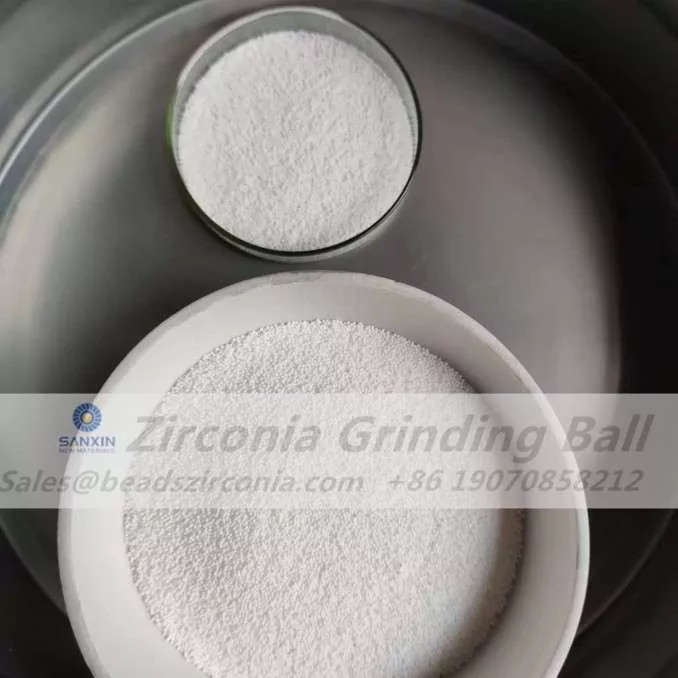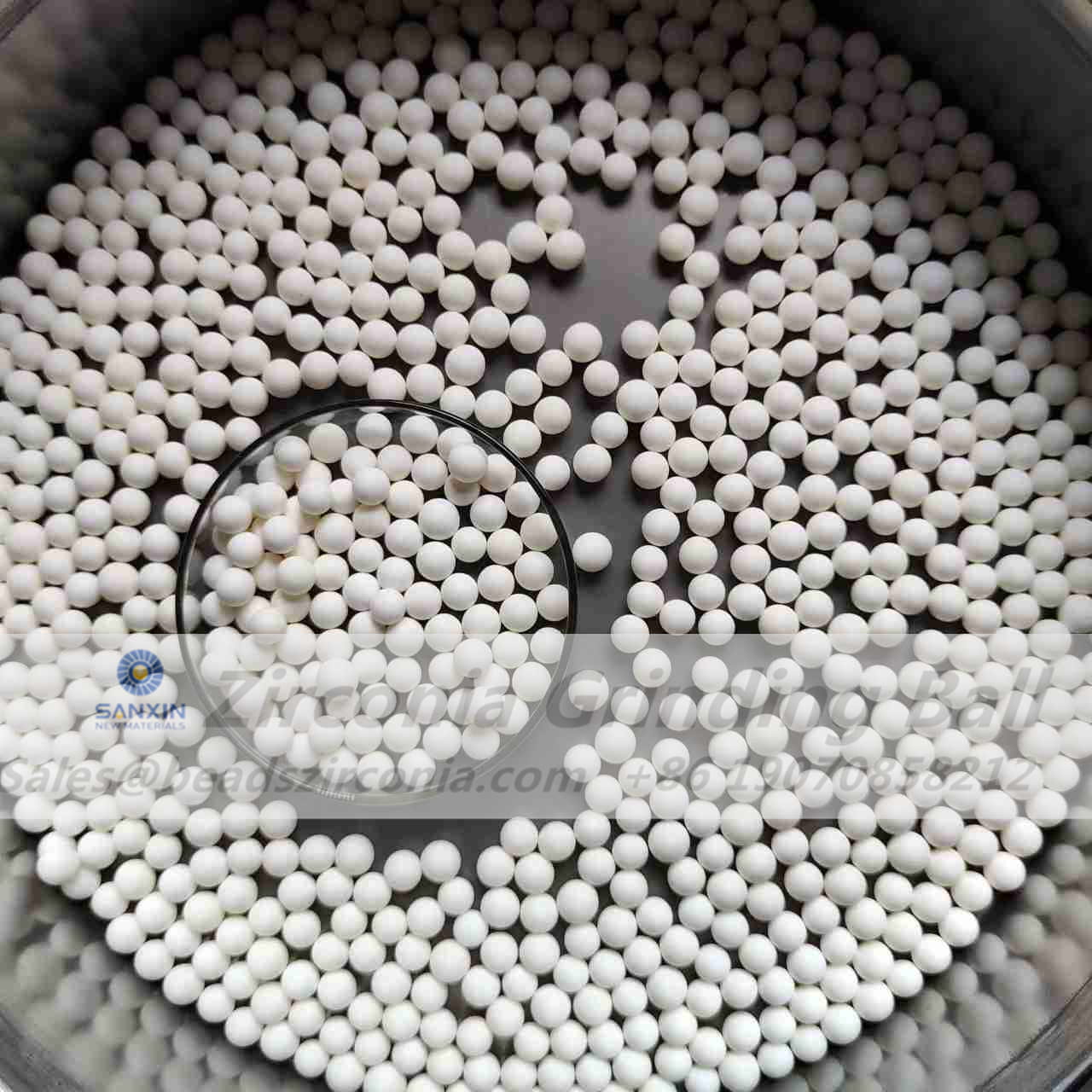
In the precision-driven landscape of high-purity alumina (HPA) powder manufacturing, the choice of grinding media can make or break the quality of the final product. Among the leading solutions in the industry, 4N 99.99% alumina grinding balls have emerged as the gold standard—offering unmatched purity, superior mechanical properties, and process reliability. With purity levels reaching 99.99%, these grinding balls are engineered specifically for industries demanding contamination-free powder processing, including electronics, advanced ceramics, lithium battery materials, semiconductors, and more.
This in-depth article provides a comprehensive look into 4N alumina grinding balls, including their chemical composition, physical properties, manufacturing methods, use cases, performance benefits, competitive advantages, and more.
Grinding balls are an essential component in the milling and comminution process across several high-precision industries. When it comes to manufacturing HPA powders—used in high-tech applications like LED substrates, lithium-ion battery separators, and semiconductor materials—the purity of grinding media plays a critical role.
4N alumina balls, with their 99.99% purity, are designed to meet stringent regulatory and production demands where impurity levels must be virtually nonexistent.
The primary advantage of these grinding balls lies in their chemical composition. With 99.99% aluminum oxide (Al₂O₃) purity, they are manufactured using ultra-refined raw materials that are stringently controlled for trace elements such as Fe, Na, Si, and Ca. These trace elements, even in parts-per-million quantities, can significantly compromise the integrity of HPA powders, especially for electronics and aerospace-grade applications.
Density: ~3.98 g/cm³ – delivers exceptional kinetic energy during grinding.
Hardness: Mohs ~9 – nearly as hard as sapphire, resisting wear and deformation.
Surface Finish: Highly smooth – enhances powder flow and minimizes contamination.
Thermal Resistance: Excellent – can endure high-temperature milling environments.
Corrosion Resistance: Outstanding – inert in acidic and alkaline environments.
These attributes collectively contribute to a high-performance grinding media capable of enduring extreme operating conditions without breaking down or introducing contaminants.
The reliability and performance of 4N alumina balls stem from a meticulously controlled manufacturing process.
The journey begins with sourcing ultra-high-purity alumina powders. These are then screened for metal ion content using advanced analytical techniques like Inductively Coupled Plasma Mass Spectrometry (ICP-MS) and X-ray fluorescence (XRF). Only the cleanest batches move forward in production.
To improve green body formation and sintering efficiency, trace additives such as polyvinyl alcohol (PVA) or polyethylene glycol (PEG) may be included in minute amounts.
Depending on the diameter and application, several forming methods are used:
Isostatic Pressing: Delivers uniform compaction from all directions, producing balls with homogenous density and low porosity.
Extrusion + Spheronization: Ideal for small-diameter balls; extrusion forms cylindrical shapes that are then rounded.
Injection Molding/Casting: Used for complex or large geometries, offering design flexibility.
Sintering is done in high-temperature kilns reaching 1600–1800°C, under tightly regulated atmospheres to:
Eliminate porosity
Densify the material
Enhance mechanical properties
Advanced sintering controls ensure uniform heat distribution and phase stability, yielding balls that meet demanding performance requirements.
The high density of 4N alumina balls translates to more impact force during grinding, effectively breaking down feedstock material into ultra-fine particles. This results in:
Faster grinding cycles
Uniform particle size distribution
Higher throughput in powder production
For instance, in lithium battery applications, achieving consistent D50 and D90 values is crucial. 4N alumina balls allow fine control over particle morphology and granularity.
Thanks to their hardness and toughness, these grinding balls exhibit a very low wear rate. Over prolonged use, this minimizes:
Size reduction or deformation of the media
Contamination of powders from wear debris
Equipment damage due to irregular media shape
This makes them a sustainable and cost-effective solution in high-volume or continuous grinding operations.
The inertness of Al₂O₃ in chemically aggressive environments ensures compatibility with a broad range of materials, such as:
Lithium iron phosphate (LiFePO₄)
Yttria-stabilized zirconia (YSZ)
Rare earth oxides
Chemical stability ensures no catalytic or absorptive reactions with the material being processed.

In semiconductor and PCB manufacturing, even minor contamination can cause circuit failure. These alumina balls offer the non-contaminating properties required to produce ultra-pure dielectric and conductive powders.
Example Use Case: Milling barium titanate or alumina for multilayer ceramic capacitors (MLCCs).
From substrates to bio-ceramics, high-strength and wear-resistant ceramic parts require uniform microstructures. 4N balls help achieve that during the powder preparation stage.
Example Use Case: Zirconia-toughened alumina ceramics used in orthopedic implants or mechanical seals.
Precision milling of materials like LFP, NMC, or silicon-carbon anode powders is essential to achieve target electrochemical performance.
Example Use Case: Grinding LFP precursor powders while maintaining low contamination for use in EV batteries.
For industries relying on synthetic sapphire (also alumina-based), such as LED and watch crystal manufacturing, maintaining high purity during grinding is vital.
Example Use Case: Milling α-Al₂O₃ powder for single-crystal growth of sapphire substrates.
| Parameter | Specification |
|---|---|
| Chemical Purity | ≥99.99% Al₂O₃ |
| Hardness | Mohs ~9 |
| Bulk Density | ~3.98 g/cm³ |
| Surface Roughness | Low (<0.2 µm Ra) |
| Size Range | 0.1 mm – 11mm |
| Shape | Spherical |
| Thermal Resistance | Up to 1800°C |
| Chemical Stability | Excellent in acid/alkali |
| Application | Dry & wet milling environments |
At every stage, strict testing protocols ensure consistency and traceability:
Particle Size Analysis: For raw material powders using laser diffraction
Density Measurement: Via Archimedes’ method
Defect Inspection: Using digital microscopy and CT scanning
Sintering Temperature Control: Real-time thermocouple monitoring
Before shipment, all grinding balls are:
Visually inspected for cracks, chipping, or deformities
Hardness-tested using Vickers or Rockwell standards
Subjected to wear tests using industry benchmarking materials
We also provide RoHS, REACH, ISO 9001:2015, and material traceability documentation upon request.
Understanding that every application is unique, we offer:
Size customization (sub-mm to 100 mm)
Surface modification (polished, roughened, or micro-textured)
Custom packing (vacuum-sealed, nitrogen-packed, etc.)
Composition tuning (minor dopants or trace element reduction)
Our engineering team works closely with clients to fine-tune grinding media for maximum efficiency.
To prevent moisture ingress or physical damage, our alumina balls are packed in:
High-density polyethylene drums
Anti-static foil bags
Shock-resistant wooden crates for bulk orders
Each package is clearly labeled with:
Batch number
Purity level
Ball size
Manufacturing date
With partners across North America, Europe, and Asia, we ensure:
Fast lead times
Full shipping traceability
Customs-compliant documentation
We also offer sample kits and Just-In-Time (JIT) delivery options for recurring clients.
Most alumina grinding balls on the market hover between 92% and 99.5% purity. At 99.99%, our 4N alumina balls virtually eliminate contamination risk, making them the top choice for ultra-sensitive applications.
Our balls consistently outperform competitors in abrasion resistance, thermal cycling durability, and chemical stability—backed by data from long-term usage in real-world customer processes.
Sanxin New Materials is constantly investing in R&D to push the boundaries of material science. Our labs work closely with universities and global research centers to pioneer next-gen ceramic technologies.
“Switching to Sanxin’s 4N grinding balls improved our LFP yield by 11% due to faster particle reduction and zero contamination. Highly recommended.”
“We previously had frequent wear issues with standard 95% Al₂O₃ media. After adopting 4N balls, the wear dropped by 70%, and ball replacement frequency halved.”
Sanxin New Materials is a globally recognized manufacturer specializing in:
High-purity ceramic grinding media
Nanopowders and additives
Wear-resistant and structural ceramics
With customers in over 50 countries and a state-of-the-art facility equipped for precision production, we are committed to delivering materials that advance the future of manufacturing.

Submit your demand,
we will contact you ASAP.

Sanxin New Materials Co., Ltd. focus on producing and selling ceramic beads and parts such as grinding media, blasting beads, bearing ball, structure part, ceramic wear-resistant liners, Nanoparticles Nano Powder

